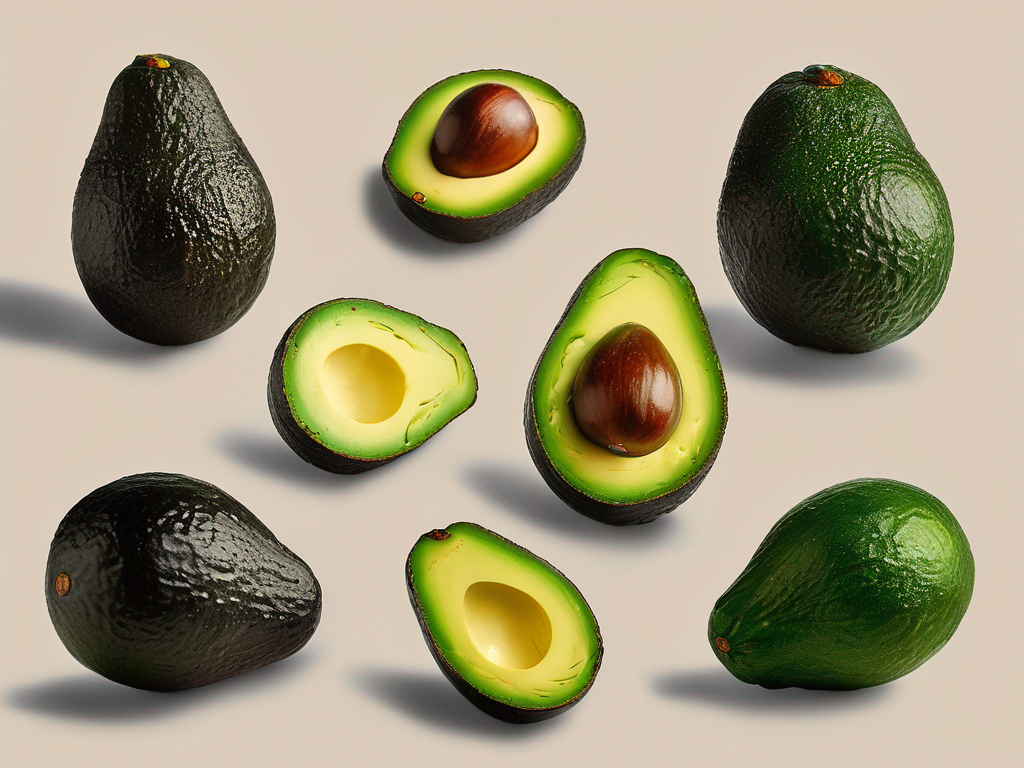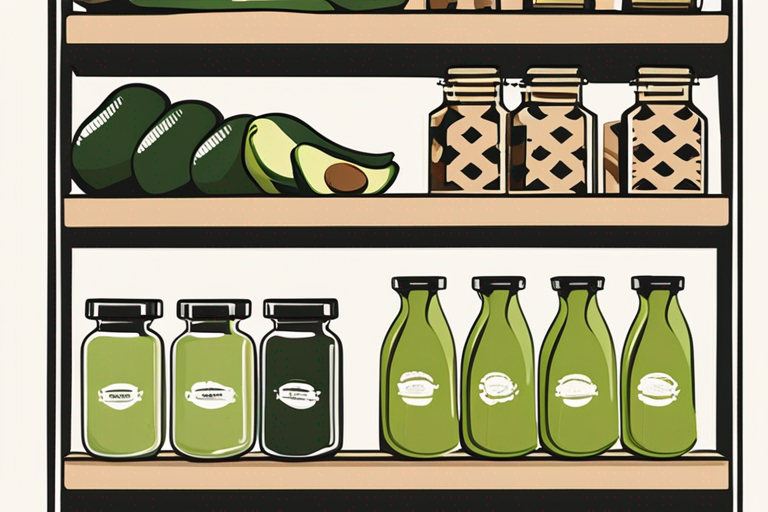
The Best Way to Store Avocados in the Pantry
Get Your Free Food Safety Cheat Sheet
30 most common foods with instant answers. Print it and stick it on your fridge—completely free!
The Best Way to Store Avocados in the Pantry
Avocados are a versatile and nutritious fruit that is loved by many. Whether you use them in salads, on toast, or in guacamole, it's essential to store them properly to maintain their freshness and flavor. In this blog post, we will discuss the best way to store avocados in the pantry to ensure they last longer and stay ripe for when you're ready to enjoy them. (Avocados)
Why Proper Storage Matters
Properly storing avocados is crucial for maintaining their quality and preventing them from spoiling prematurely. When stored incorrectly, avocados can quickly ripen and become overripe, mushy, or even rotten. By following the right storage methods, you can extend the shelf life of your avocados and reduce food waste.
Factors Affecting Avocado Storage
Several factors can influence how long avocados last in the pantry:
- Temperature: Avocados ripen faster in warmer temperatures. Storing them in a cool, dark place can help slow down the ripening process.
- Humidity: Avocados are sensitive to humidity levels. Excess moisture can cause them to spoil quickly.
- Air Exposure: Avocados can oxidize when exposed to air, turning brown and losing their flavor and texture.
- Ethylene Gas: Avocados produce ethylene gas, a natural ripening agent. Storing avocados with ethylene-sensitive fruits or vegetables can speed up the ripening process.
How to Store Avocados in the Pantry
Follow these simple steps to store avocados in the pantry effectively:
-
Choose the Right Avocados: Select ripe but firm avocados for pantry storage. Avoid avocados that are too soft or have blemishes.
-
Inspect for Ripeness: Gently squeeze the avocado to check for ripeness. It should yield slightly to pressure but not feel mushy.
-
Wrap in Paper Towel: To prevent excess moisture and ethylene exposure, wrap each avocado individually in a paper towel.
-
Store in a Dark, Cool Place: Place the wrapped avocados in a dark, cool pantry or cupboard away from direct sunlight and heat sources.
-
Check Regularly: Check the avocados periodically for ripeness. When they reach your desired level of ripeness, transfer them to the refrigerator to slow down further ripening.
Tips for Extending Avocado Shelf Life
Here are some additional tips to help extend the shelf life of your avocados:
- Use Citrus Juice: Sprinkle some lemon or lime juice on cut avocados to prevent browning.
- Refrigerate Ripe Avocados: Once avocados are ripe, store them in the refrigerator to prolong their freshness.
- Use airtight containers: Store cut avocados in airtight containers to minimize air exposure and oxidation.
- Avoid Freezing: While you can freeze mashed avocados for later use, whole avocados do not freeze well and may lose their texture.
Safety Precautions
When storing avocados in the pantry, keep the following safety precautions in mind:
- Check for Mold: Inspect avocados regularly for any signs of mold or spoilage. Discard any avocados that appear moldy or have an off smell.
- Wash Before Use: Wash avocados thoroughly before cutting or consuming to remove any dirt or bacteria on the skin.
- Practice FIFO: Follow the "first in, first out" rule to ensure you use older avocados before newer ones to prevent food waste.
Conclusion
Properly storing avocados in the pantry can help you enjoy them at their best for longer periods. By following the tips and guidelines outlined in this blog post, you can ensure that your avocados stay fresh, ripe, and delicious until you're ready to enjoy them. Remember to check them regularly, use citrus juice to prevent browning, and transfer ripe avocados to the fridge to extend their shelf life. With these simple steps, you can make the most of this nutritious and flavorful fruit. Enjoy your perfectly ripe avocados! (Avocados)

Authoritative Food Safety References
These agencies and university labs inform every tip and health precaution we publish.
USDA FoodKeeper – Cold Storage Guidelines
Official refrigerator, freezer, and pantry timelines maintained by the U.S. Department of Agriculture.
Visit USDA FoodKeeperFDA Produce Safety Rule & Grower Guidance
Field-to-fridge handling practices that prevent contamination of fruits, vegetables, and leafy greens.
Visit FDA Produce SafetyCDC Foodborne Illness Prevention Hub
Surveillance-backed guidance on pathogens, symptoms, and steps to reduce foodborne illness risk.
Visit CDC Food SafetyUC Davis Postharvest Technology Center
University research detailing optimal storage atmospheres for produce after harvest.
Visit UC Davis PostharvestPenn State Extension – Home Food Preservation & Safety
Peer-reviewed extension bulletins on safe canning, chilling, and reheating practices.
Visit Penn State ExtensionHow long can I store avocados in the pantry before they go bad?
Can I store cut avocados in the pantry?
How can I tell if an avocado is ripe and ready to be stored in the pantry?
Can I store unripe avocados in the pantry to ripen?
Get Your Free Food Safety Cheat Sheet
30 most common foods with instant answers. Print it and stick it on your fridge—completely free! Want more? Upgrade to the complete guide with 70+ foods.
Scan your food directly and get instant safety info using our AI-powered camera feature.